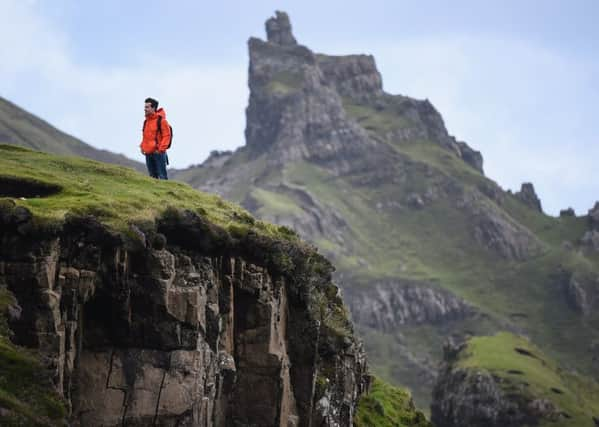Skye alongside Barcelona and Prague as victim of '˜mass tourism'


The Hebridean island has been cited alongside Barcelona, Amsterdam, Prague, Venice and Dubrovnik as an example of a much-loved destination being “destroyed” by vast volumes of visitors flooding in.
Skye has been highlighted in the wake of its busiest ever summer, which has seen growing demands for improved infrastructure on Skye.
Advertisement
Hide AdA new Skye tourism body, formed to help the island cope with the recent surge in visitors has warned there are no “magic wand” solutions to many of the problems caused as a result of its increasing popularity.
A study of more than 30 different destinations for eco-tourism guide Green Global Travel, which describes how mass tourism is “destroying the destinations travellers love,” highlights Skye as “one Scotland’s most over-popular destinations.”
The website says it has run into “trouble” recent years as word has spread about its “numerous natural landmarks.”
It has highlighted problems caused by motorists “spilling out” of car parks, locals finding their normal routes to work blocked, a drastic shortage of toilet facilities, and warnings from the police about turning up without booking accommodation.
The website has blamed hit TV show Outlander, whose fans have been encouraged to visit Skye due to its links to Bonnie Prince Charlie and the Jacobites, and pop star Harry Styles, who recently shot a video on Skye, for the recent boom.
Its analysis states: “Skye is second only to Lewis and Harris among the largest islands in Scotland.
Advertisement
Hide Ad“So perhaps it’s no surprise that there’s a diverse array of things to do, with activities geared towards nature lovers, outdoor adventurers, foodies and families.
“The problem is that, during the peak summer months (June to September), there are too many tourists looking to explore the ‘Misty Isle.’
Advertisement
Hide Ad“Word on Skye’s stellar beauty has spread, making it one of Scotland’s most over-popular holiday destinations.
“While this brings invaluable income to local businesses, it’s proven problematic in terms of infrastructure and environmental impact.
“Responsible tourism to Skye is still possible. Allow yourself to go off the beaten path and support local businesses who give back to the community and act for the environment. Treat the island as if it was your home.”
Both the Scottish Government and national tourism agency VisitScotland have pledged action to tackle problems caused by the soaring number of visitors to Skye, which has featured in a number of high-profile films in recent years, including Prometheus, Macbeth and The BFG.
A new taskforce has been set up after the local MSP, Kate Forbes, warned that the island’s infrastructure was “creaking at the seams” to the number of visitors flocking there.
Malcolm Roughead, chief executive of VisitScotland, said: “As may be expected, an increase in visitors to Skye has put pressure on some of the island’s more popular attractions, with concerns raised around parking, a lack of accommodation and environmental damage.
Advertisement
Hide Ad“We are aware of this and actively listening to and working with the industry on Skye to help alleviate these issues. However, we also need to ensure we don’t deter visitors, despite the high season pressure points.
“Alongside efforts from the local community, we’re working closely with a newly-established destination management organisation, Skyeconnect, to consider ways to mitigate these issues, by encouraging visitors to come at different times throughout the year and by promoting other-lesser known, but equally beautiful, attractions in the Highlands.